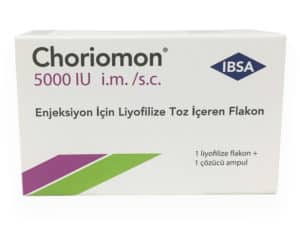
Trigger Shot

If you’re new to fertility treatments, you probably have questions about the potential number and kind of injections you’ll need to endure. To stimulate the final phases of ovulation, doctors can administer an injection known as the “trigger shot.”
What is trigger shot?
Human choriogonadotropin (hCG) is injected as the trigger shot; it is frequently sold under the names Ovidrel or Pregnyl. hCG and luteinizing hormone (LH) both operate on the same LH receptor, which is in charge of releasing an egg during ovulation. hCG is the same as the human pregnancy hormone.
LH normally rises in the middle of the cycle and performs two critical functions: it matures the egg within the dominant follicle (the sac that houses the egg) and it releases the egg from the follicle wall, allowing it to now break from the ovary and travel to the fallopian tube.
Lupron triggers are another form of trigger shots. Lupron triggers are different because they contain Leuprolide Acetate instead of HCG. This is beneficial when there is concern for OHSS. Your doctor may want to do bloodwork after your trigger to ensure whether or not you will need another dose.
CLICK AND ORDER NOW https://fastivf.com/product/choriomon-5000-iu-imsc
How Does Trigger Shot Work?
Infertility treatments don’t always involve trigger injections; it all depends on your reproductive health and how your doctor decides to proceed. If you don’t have your own LH surge, it can accelerate the final stage of ovulation once a dominant follicle has developed. It’s also frequently used to help your doctor time intercourse, at-home insemination, an IUI, or egg retrieval (for IVF or egg freezing).
The trigger shot can be used to time egg retrievals during IVF cycles. This will enable your doctor to collect the most mature eggs possible in a single batch. Typically, your doctor would advise you to take your trigger shot 34–36 hours prior to your scheduled retrieval.
It’s crucial to get the time precisely right. Too early of a trigger may result in many immature or unreleased eggs from follicles (have not completed the maturation process spurred by the trigger). If it’s too late, the follicles will already have ovulated and there won’t be any mature eggs left to be extracted. Thus, it’s crucial to adhere to your doctor’s precise instructions regarding injection timing. Setting an alarm and making sure you have read the instructions before can be beneficial. Additionally, keep an eye out for daylight saving time, which is infamous for throwing IVF patients’ timing off.
What are the trigger shot side effects?
You could have a few side effects from the trigger shot. The most typical symptoms are bloating and pelvic or stomach pain. Additionally, there’s a chance that the injection site will hurt or be tender.
Another concern is OHSS. Your ovaries swell and fill with fluid if you have OHSS. In mild situations, you can experience bloating, nausea, vomiting, or diarrhea, as well as digestive discomfort.
Rarely, severe OHSS can be life-threatening. Rapid weight gain (more than 2 pounds per day) and stomach bloating are warning signs, as are severe abdominal pain or extreme nausea/vomiting.
Additional signs of this syndrome could be breathing difficulties and decreased urine production. If you do experience these symptoms, it is highly recommended you contact your doctor’s office. In any case, your doctor will support you in how to use triggers.
You can read more about infertility and IVF treatment https://fastivf.com/medications-used-to-treat-infertility/
If you start an IVF process after a doctor’s advice, feel free to contact us for the cheapest IVF medication needs like Ovidrel, Choriomon, Gonal f , Lupron and all other products.

